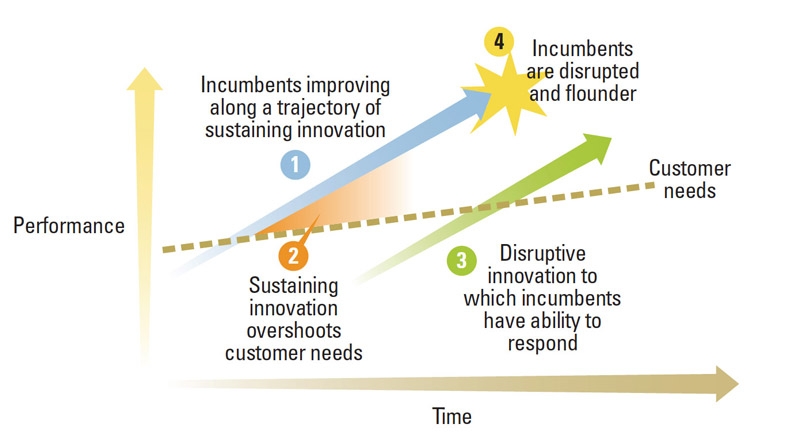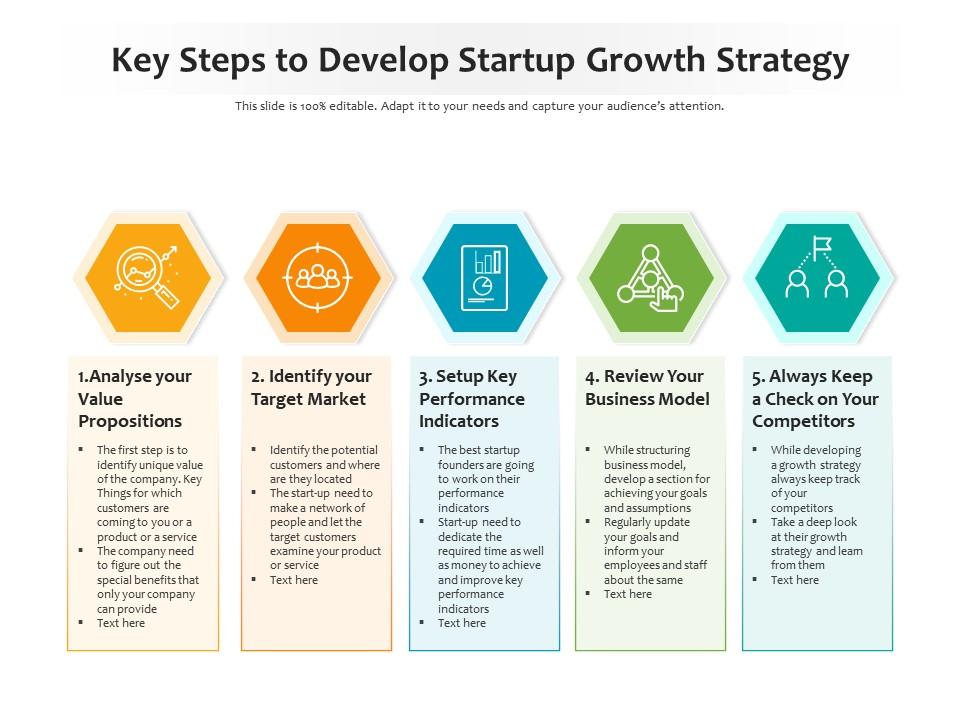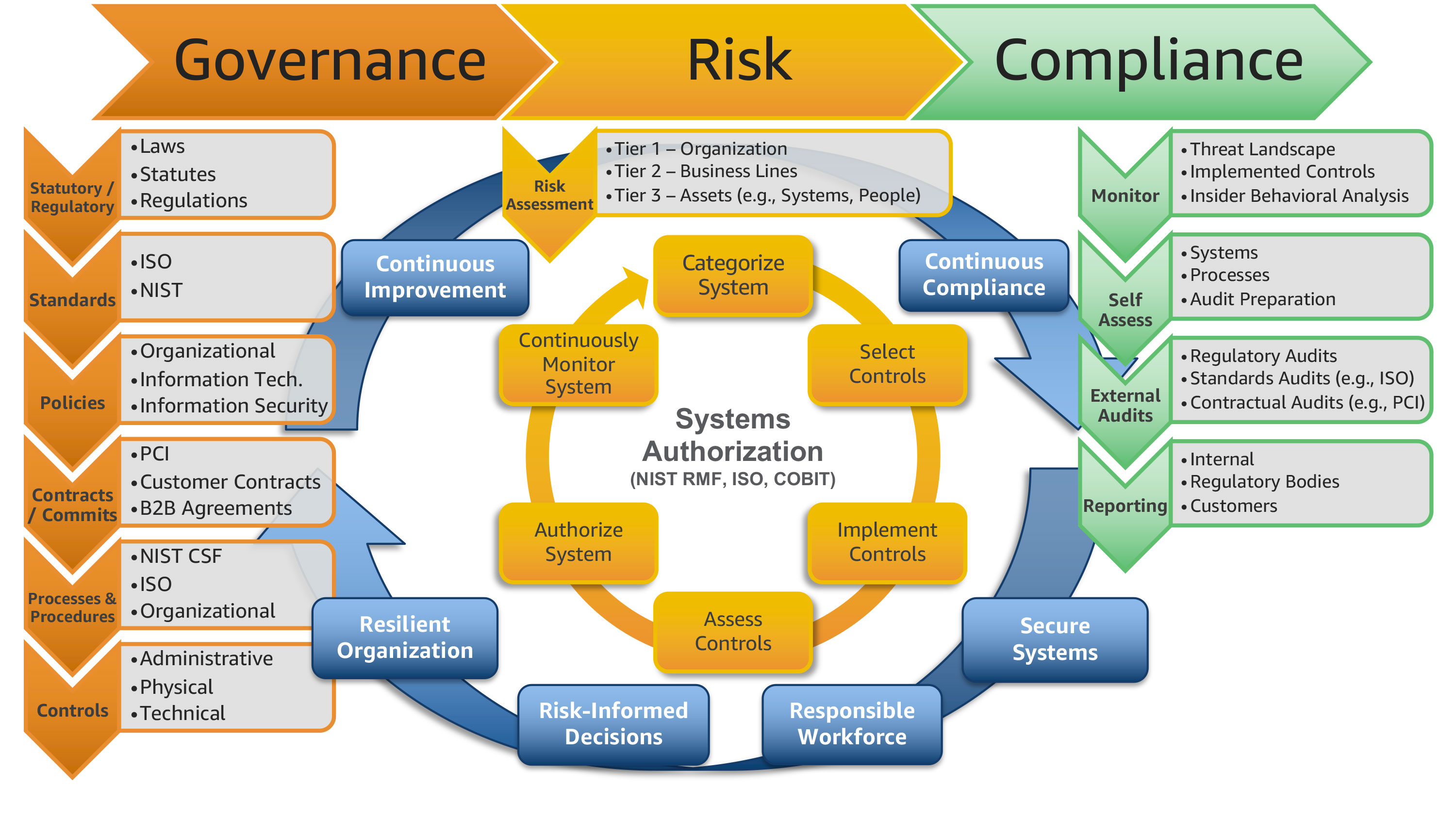What is Disruption and Why Does it Matter in the Startup World
Disruption is a term that has become synonymous with innovation and growth in the startup ecosystem. At its core, disruption refers to the process of challenging and transforming existing markets, industries, or business models. This can be achieved through the introduction of new technologies, products, or services that create new markets, or by leveraging existing technologies to create new business models.
Startup disruption strategies are essential for driving growth and innovation in today’s fast-paced business landscape. By embracing disruption, startups can create new opportunities, challenge established players, and ultimately, achieve success. Successful disruptors such as Airbnb, Uber, and Netflix have demonstrated the power of disruption, transforming entire industries and creating new markets in the process.
The significance of disruption in the startup world cannot be overstated. Disruption drives innovation, which in turn, drives growth. By embracing disruption, startups can stay ahead of the curve, adapt to changing market conditions, and ultimately, achieve long-term success. Moreover, disruption creates new opportunities for startups to differentiate themselves from established players, creating a competitive advantage that can be leveraged to drive growth.
Examples of successful disruptors can be seen in various industries. In the transportation industry, companies like Tesla and Lyft have disrupted traditional business models, creating new markets and opportunities for growth. In the retail industry, companies like Amazon and Warby Parker have disrupted traditional brick-and-mortar models, creating new business models that have transformed the way we shop.
Startup disruption strategies are not limited to specific industries or markets. Disruption can occur in any industry, and startups that embrace disruption can create new opportunities for growth and innovation. By understanding the concept of disruption and its significance in the startup world, entrepreneurs and business leaders can develop effective strategies for driving growth and innovation in their respective industries.
In the next section, we will explore the process of identifying opportunities for disruption, providing a step-by-step guide for startups looking to leverage disruption to drive growth and innovation.
Identifying Opportunities for Disruption: A Step-by-Step Guide
Identifying opportunities for disruption is a critical step in developing effective startup disruption strategies. To achieve this, startups must conduct thorough market research, gather customer feedback, and analyze competitor activity. By following a structured approach, startups can pinpoint areas ripe for disruption and create innovative solutions that meet the needs of their target market.
The first step in identifying opportunities for disruption is to conduct market research. This involves gathering data on the target market, including demographics, needs, and pain points. Startups can leverage tools such as surveys, focus groups, and social media listening to gather valuable insights. Additionally, analyzing industry reports, trends, and news can provide a deeper understanding of the market landscape.
Once market research is complete, startups should gather customer feedback to validate their findings. This can be achieved through customer interviews, feedback forms, and online reviews. By listening to the voice of the customer, startups can identify areas where existing solutions are falling short and create innovative solutions that meet their needs.
Competitor analysis is also crucial in identifying opportunities for disruption. Startups should analyze their competitors’ strengths, weaknesses, and strategies to identify areas where they can differentiate themselves. This can involve analyzing competitors’ products, services, marketing strategies, and customer engagement tactics.
By combining market research, customer feedback, and competitor analysis, startups can identify potential areas for disruption. The next step is to analyze the data and pinpoint opportunities. This involves evaluating the feasibility of each opportunity, assessing the potential impact, and determining the resources required to pursue each opportunity.
Actionable tips for analyzing data and pinpointing opportunities include:
- Use data visualization tools to identify patterns and trends in the data.
- Apply the jobs-to-be-done framework to identify areas where customers are struggling to find solutions.
- Use the business model canvas to visualize and design innovative business models.
- Conduct a SWOT analysis to evaluate the strengths, weaknesses, opportunities, and threats associated with each opportunity.
By following these steps and using these tools, startups can identify opportunities for disruption and create innovative solutions that meet the needs of their target market. In the next section, we will explore the essential characteristics of a disruptive business model and highlight successful examples of startups that have leveraged these strategies to achieve success.
Building a Disruptive Business Model: Key Characteristics and Strategies
A disruptive business model is one that challenges traditional industry norms and creates new markets, products, or services that meet the needs of customers in innovative ways. To build a disruptive business model, startups must focus on key characteristics such as scalability, flexibility, and customer-centricity.
Scalability is critical for startups looking to disrupt a market. A scalable business model allows startups to quickly expand their customer base, increase revenue, and adapt to changing market conditions. This can be achieved through the use of technology, outsourcing, and strategic partnerships.
Flexibility is also essential for startups looking to disrupt a market. A flexible business model allows startups to pivot quickly in response to changing market conditions, customer needs, and competitor activity. This can be achieved through the use of agile methodologies, lean startup principles, and continuous innovation.
Customer-centricity is a key characteristic of a disruptive business model. Startups must focus on meeting the needs of their customers, creating products and services that solve real problems and create value. This can be achieved through the use of customer feedback, user testing, and data-driven decision making.
Successful startups that have leveraged these strategies to achieve success include Airbnb, Uber, and Netflix. These companies have disrupted traditional industries such as hospitality, transportation, and entertainment, creating new markets and business models that meet the needs of customers in innovative ways.
Airbnb, for example, has disrupted the hospitality industry by creating a platform that allows individuals to rent out their homes to travelers. This business model is scalable, flexible, and customer-centric, allowing Airbnb to quickly expand its customer base and adapt to changing market conditions.
Uber has disrupted the transportation industry by creating a platform that allows individuals to hail rides using their smartphones. This business model is scalable, flexible, and customer-centric, allowing Uber to quickly expand its customer base and adapt to changing market conditions.
Netflix has disrupted the entertainment industry by creating a platform that allows individuals to stream movies and TV shows directly to their devices. This business model is scalable, flexible, and customer-centric, allowing Netflix to quickly expand its customer base and adapt to changing market conditions.
By focusing on key characteristics such as scalability, flexibility, and customer-centricity, startups can build disruptive business models that challenge traditional industry norms and create new markets, products, and services that meet the needs of customers in innovative ways.
How to Create a Culture of Innovation and Risk-Taking
Fostering a culture of innovation and risk-taking is crucial for startups looking to disrupt a market. A culture that encourages experimentation, learning from failure, and continuous improvement can help startups stay ahead of the curve and achieve long-term success.
To create a culture of innovation and risk-taking, startups must prioritize experimentation and learning from failure. This can be achieved by providing employees with the autonomy to try new things, take calculated risks, and learn from their mistakes. Startups can also encourage experimentation by providing resources and support for new projects and initiatives.
Another key aspect of a culture of innovation and risk-taking is continuous improvement. Startups must prioritize ongoing learning and development, providing employees with opportunities to develop new skills and stay up-to-date with the latest trends and technologies. This can be achieved through training programs, workshops, and conferences.
Customer-centricity is also essential for creating a culture of innovation and risk-taking. Startups must prioritize customer needs and feedback, using this information to inform product development and business strategy. This can be achieved through customer feedback mechanisms, user testing, and data-driven decision making.
Leadership plays a critical role in creating a culture of innovation and risk-taking. Leaders must prioritize innovation and risk-taking, providing employees with the autonomy and resources to experiment and try new things. Leaders must also model the behavior they want to see in their employees, demonstrating a willingness to take calculated risks and learn from failure.
Startups can also create a culture of innovation and risk-taking by recognizing and rewarding innovative behavior. This can be achieved through employee recognition programs, bonuses, and promotions. Startups can also create a sense of community and collaboration, providing employees with opportunities to work together on new projects and initiatives.
Examples of startups that have successfully created a culture of innovation and risk-taking include Google, Amazon, and Facebook. These companies have prioritized experimentation, learning from failure, and continuous improvement, using these strategies to drive innovation and disruption in their respective markets.
By creating a culture of innovation and risk-taking, startups can drive disruption and achieve long-term success. By prioritizing experimentation, learning from failure, and continuous improvement, startups can stay ahead of the curve and create new markets, products, and services that meet the needs of customers in innovative ways.
Leveraging Technology to Drive Disruption: Emerging Trends and Tools
Technology plays a crucial role in driving disruption in various industries. Emerging trends such as artificial intelligence (AI), blockchain, and the Internet of Things (IoT) are transforming the way businesses operate and creating new opportunities for startups to disrupt existing markets.
AI is one of the most significant emerging trends in technology, with applications in areas such as machine learning, natural language processing, and computer vision. Startups can leverage AI to create new business models, improve operational efficiency, and enhance customer experiences.
Blockchain is another emerging trend that is gaining traction in various industries. This technology enables secure, transparent, and decentralized data management, making it an attractive solution for startups looking to disrupt traditional industries such as finance, healthcare, and supply chain management.
IoT is a network of physical devices, vehicles, and other items that are embedded with sensors, software, and connectivity, allowing them to collect and exchange data. Startups can leverage IoT to create new business models, improve operational efficiency, and enhance customer experiences in areas such as smart homes, cities, and industries.
Startups can also leverage other emerging technologies such as augmented reality (AR), virtual reality (VR), and 5G networks to drive disruption in various industries. AR and VR can be used to create immersive customer experiences, while 5G networks can enable faster data transfer rates and lower latency, making them ideal for applications such as IoT and smart cities.
To leverage these emerging trends and tools, startups must have a deep understanding of the technologies and their applications. They must also be willing to experiment and take calculated risks to drive innovation and disruption.
Examples of startups that have successfully leveraged emerging technologies to drive disruption include Uber, Airbnb, and Netflix. These companies have used technologies such as AI, blockchain, and IoT to create new business models, improve operational efficiency, and enhance customer experiences.
By leveraging emerging technologies, startups can drive disruption and achieve long-term success. However, it is essential to note that technology alone is not enough to drive disruption. Startups must also have a deep understanding of their target market, a clear value proposition, and a well-executed business strategy.
Measuring and Optimizing Disruption: Key Performance Indicators (KPIs) and Metrics
Measuring and optimizing disruption efforts is crucial for startups to ensure they are on the right track and making progress towards their goals. Key performance indicators (KPIs) and metrics provide valuable insights into the effectiveness of startup disruption strategies, enabling data-driven decision making and continuous improvement.
Customer acquisition costs (CAC) are a critical KPI for startups, as they directly impact the bottom line. Startups must track CAC to ensure they are acquiring customers at a cost that is sustainable and aligned with their business model. This can be achieved by monitoring metrics such as cost per acquisition, customer lifetime value, and return on investment (ROI).
Retention rates are another essential KPI for startups, as they indicate the ability to retain customers over time. Startups must track retention rates to ensure they are delivering value to their customers and meeting their needs. This can be achieved by monitoring metrics such as customer churn rate, net promoter score, and customer satisfaction.
Revenue growth is a key metric for startups, as it indicates the ability to scale and achieve long-term success. Startups must track revenue growth to ensure they are on the right track and making progress towards their goals. This can be achieved by monitoring metrics such as monthly recurring revenue, annual recurring revenue, and revenue growth rate.
To track and analyze these metrics, startups can leverage tools such as Google Analytics, Mixpanel, and Salesforce. These tools provide valuable insights into customer behavior, enabling startups to make data-driven decisions and optimize their disruption efforts.
Startups can also leverage A/B testing and experimentation to optimize their disruption efforts. This involves testing different versions of a product or service to determine which one performs better, and using the insights gained to inform future decisions.
Examples of startups that have successfully measured and optimized their disruption efforts include Uber, Airbnb, and Netflix. These companies have used data-driven decision making and continuous experimentation to optimize their business models and achieve long-term success.
By measuring and optimizing disruption efforts, startups can ensure they are on the right track and making progress towards their goals. By leveraging KPIs and metrics, startups can make data-driven decisions and continuously improve their business models, ultimately achieving long-term success.
Overcoming Common Challenges and Obstacles to Disruption
Disrupting a market can be a challenging and complex process, and startups may face a variety of obstacles along the way. Regulatory hurdles, competition from established players, and resistance to change are just a few of the common challenges that startups may encounter when attempting to disrupt a market.
Regulatory hurdles can be a significant obstacle for startups, particularly in industries that are heavily regulated such as healthcare and finance. Startups must navigate complex regulatory frameworks and ensure that their products or services comply with relevant laws and regulations.
Competition from established players is another common challenge that startups may face when attempting to disrupt a market. Established players may have significant resources and market share, making it difficult for startups to gain traction and compete effectively.
Resistance to change is also a common obstacle that startups may encounter when attempting to disrupt a market. Customers may be hesitant to adopt new products or services, particularly if they are unfamiliar with the technology or business model.
To overcome these challenges, startups must be agile and adaptable, and must be willing to pivot their business model or product if necessary. Startups must also be able to effectively communicate the value proposition of their product or service to customers and stakeholders.
Building strategic partnerships can also be an effective way for startups to overcome common challenges and obstacles to disruption. By partnering with established players or other startups, startups can gain access to new markets, technologies, and resources.
Examples of startups that have successfully overcome common challenges and obstacles to disruption include Uber, Airbnb, and Netflix. These companies have used innovative business models and technologies to disrupt traditional industries and achieve significant success.
By understanding the common challenges and obstacles to disruption, startups can better prepare themselves for the journey ahead and increase their chances of success. By being agile, adaptable, and willing to pivot, startups can overcome regulatory hurdles, competition from established players, and resistance to change, and achieve long-term success.
Sustaining Disruption: Strategies for Long-Term Success
Sustaining disruption over the long term is crucial for startups to maintain their competitive edge and achieve long-term success. This requires a continuous effort to innovate, engage with customers, and form strategic partnerships.
Continuous innovation is essential for sustaining disruption. Startups must stay ahead of the curve by continuously developing new products, services, and business models that meet the evolving needs of their customers. This can be achieved by investing in research and development, encouraging a culture of innovation, and leveraging emerging technologies such as AI, blockchain, and IoT.
Customer engagement is also critical for sustaining disruption. Startups must build strong relationships with their customers by providing exceptional customer service, gathering feedback, and incorporating customer insights into their product development and business strategy.
Strategic partnerships can also play a key role in sustaining disruption. Startups can form partnerships with other startups, established players, or industry experts to gain access to new markets, technologies, and resources. This can help startups to scale their business, improve their products and services, and stay ahead of the competition.
Examples of startups that have successfully sustained disruption over the long term include Amazon, Google, and Facebook. These companies have continuously innovated, engaged with their customers, and formed strategic partnerships to maintain their competitive edge and achieve long-term success.
By employing these strategies, startups can sustain disruption over the long term and achieve long-term success. By continuously innovating, engaging with customers, and forming strategic partnerships, startups can maintain their competitive edge and stay ahead of the curve in their respective industries.
In conclusion, sustaining disruption is a critical component of startup success. By continuously innovating, engaging with customers, and forming strategic partnerships, startups can maintain their competitive edge and achieve long-term success. By following these strategies, startups can ensure that their disruption efforts are sustained over the long term and that they remain a leader in their industry.







